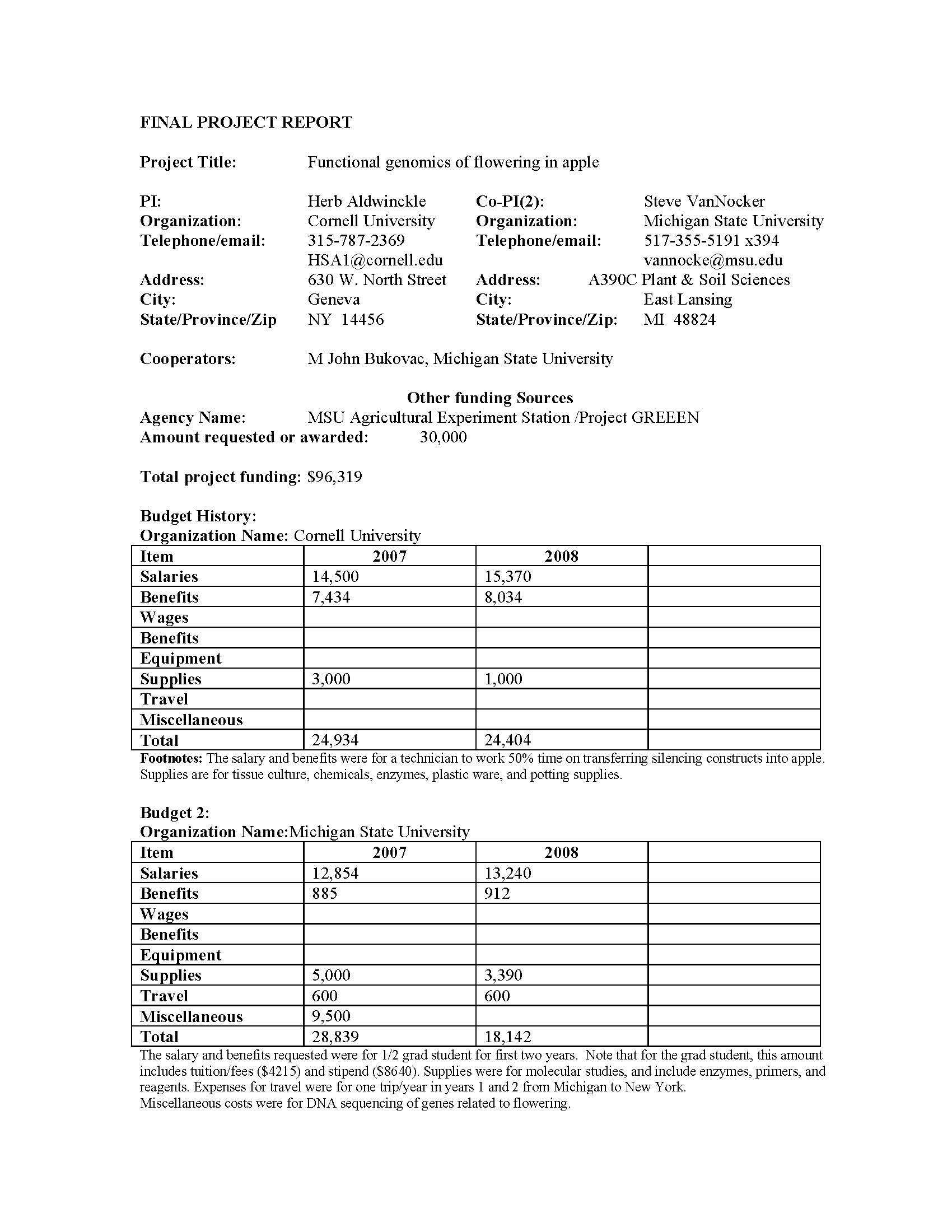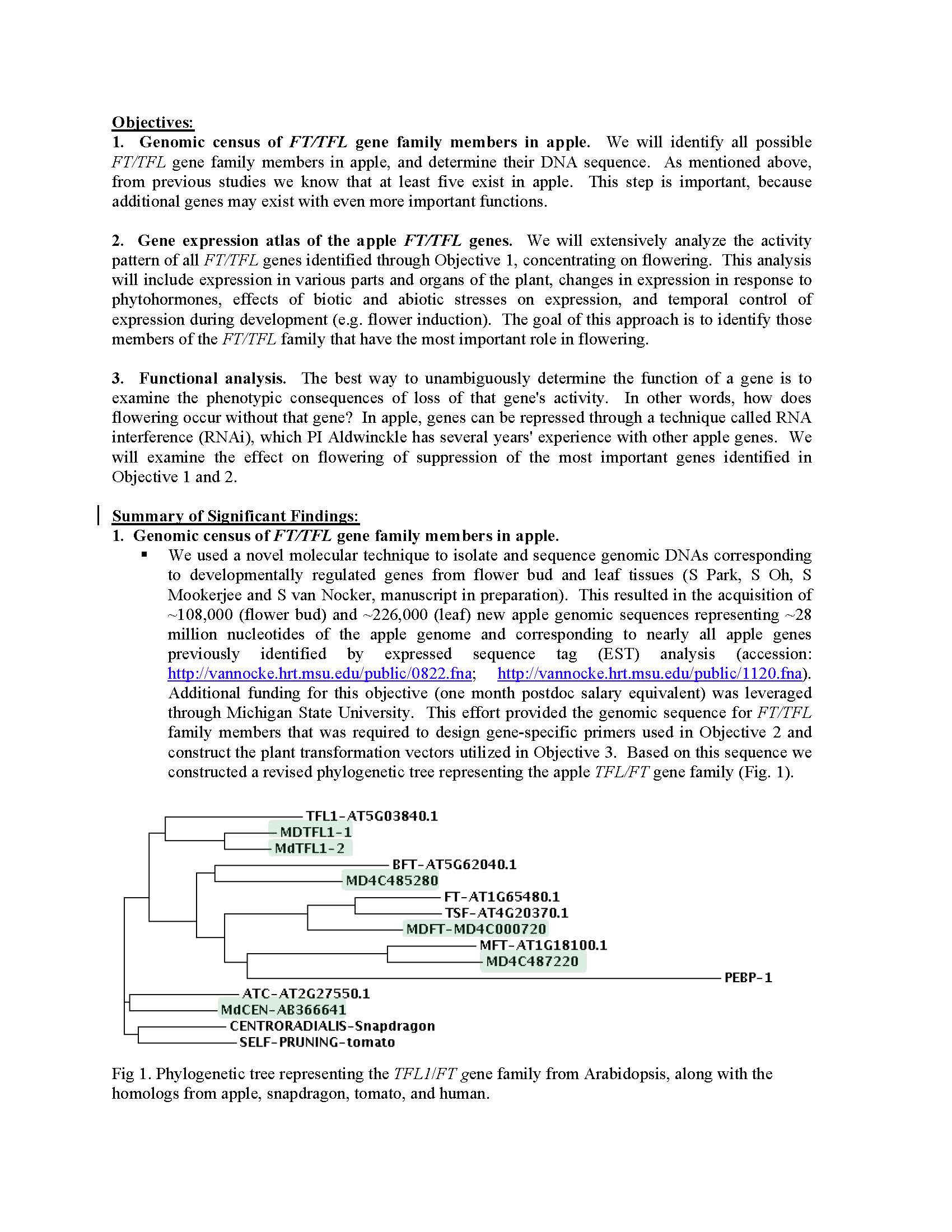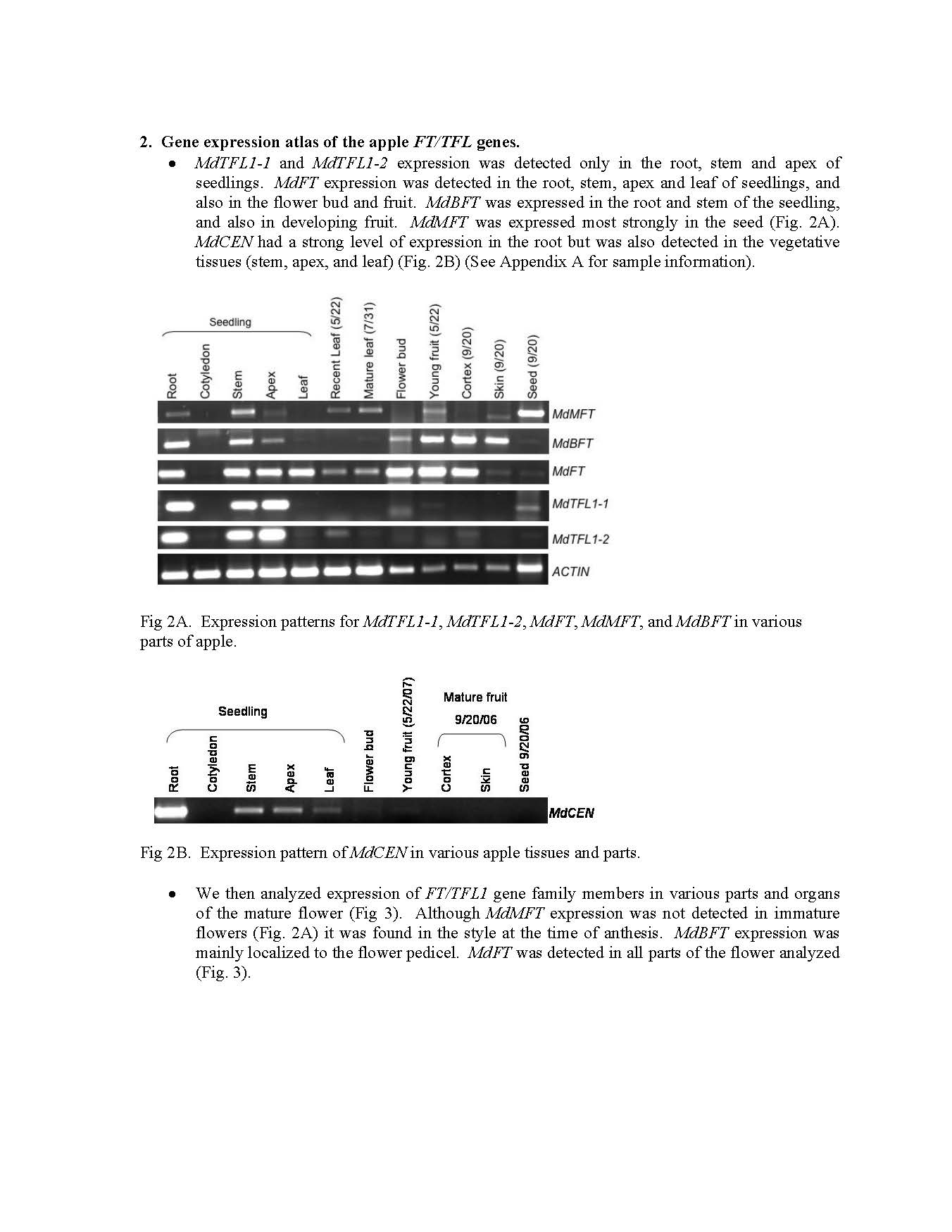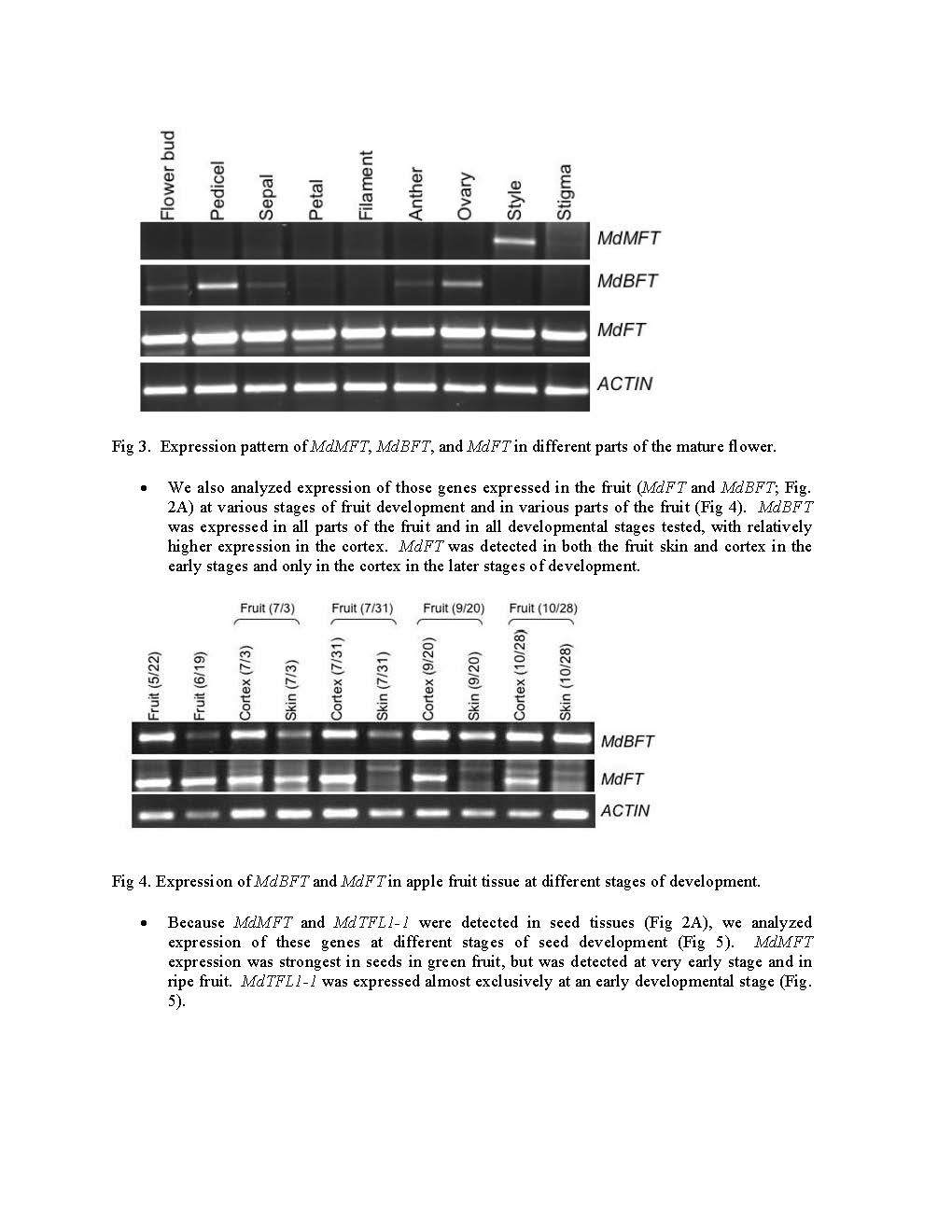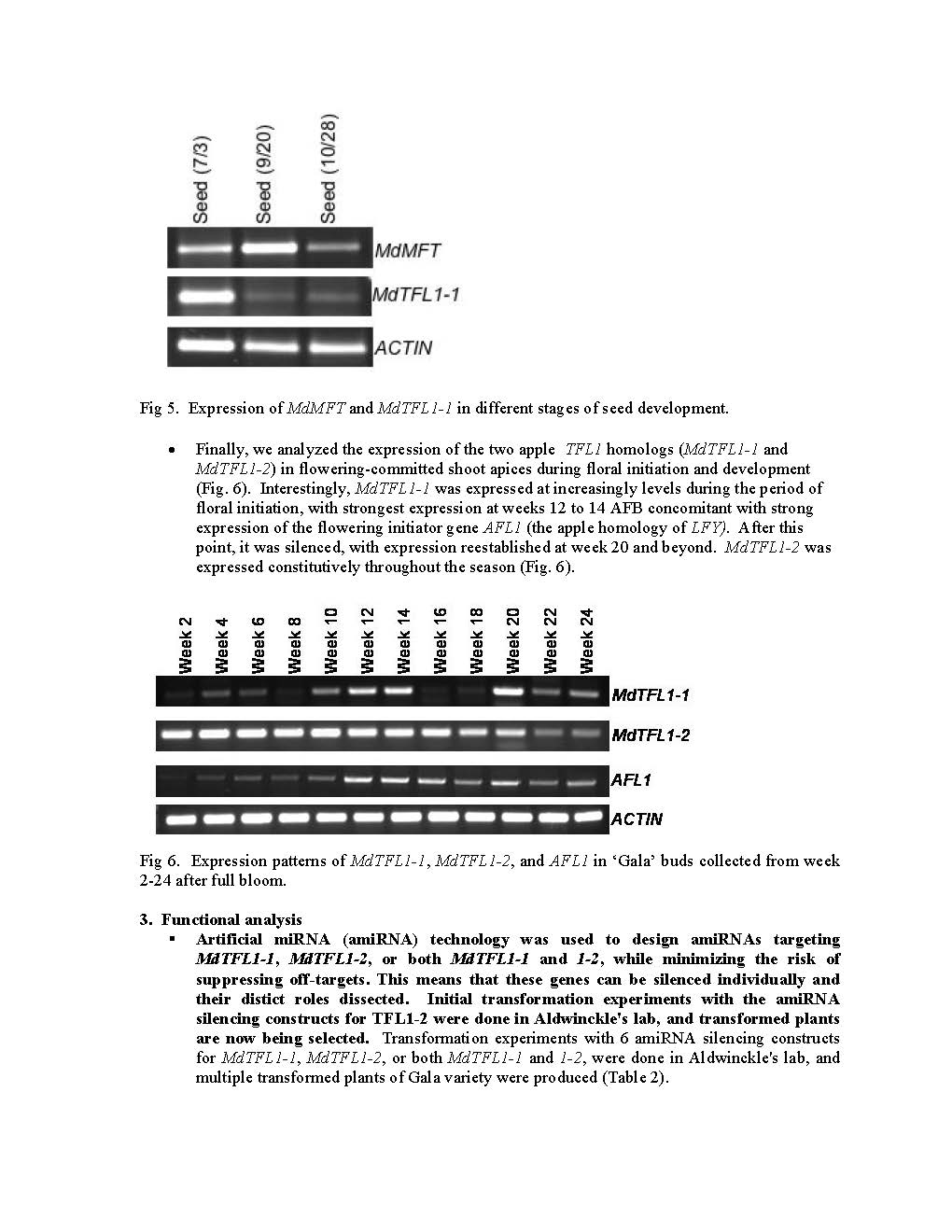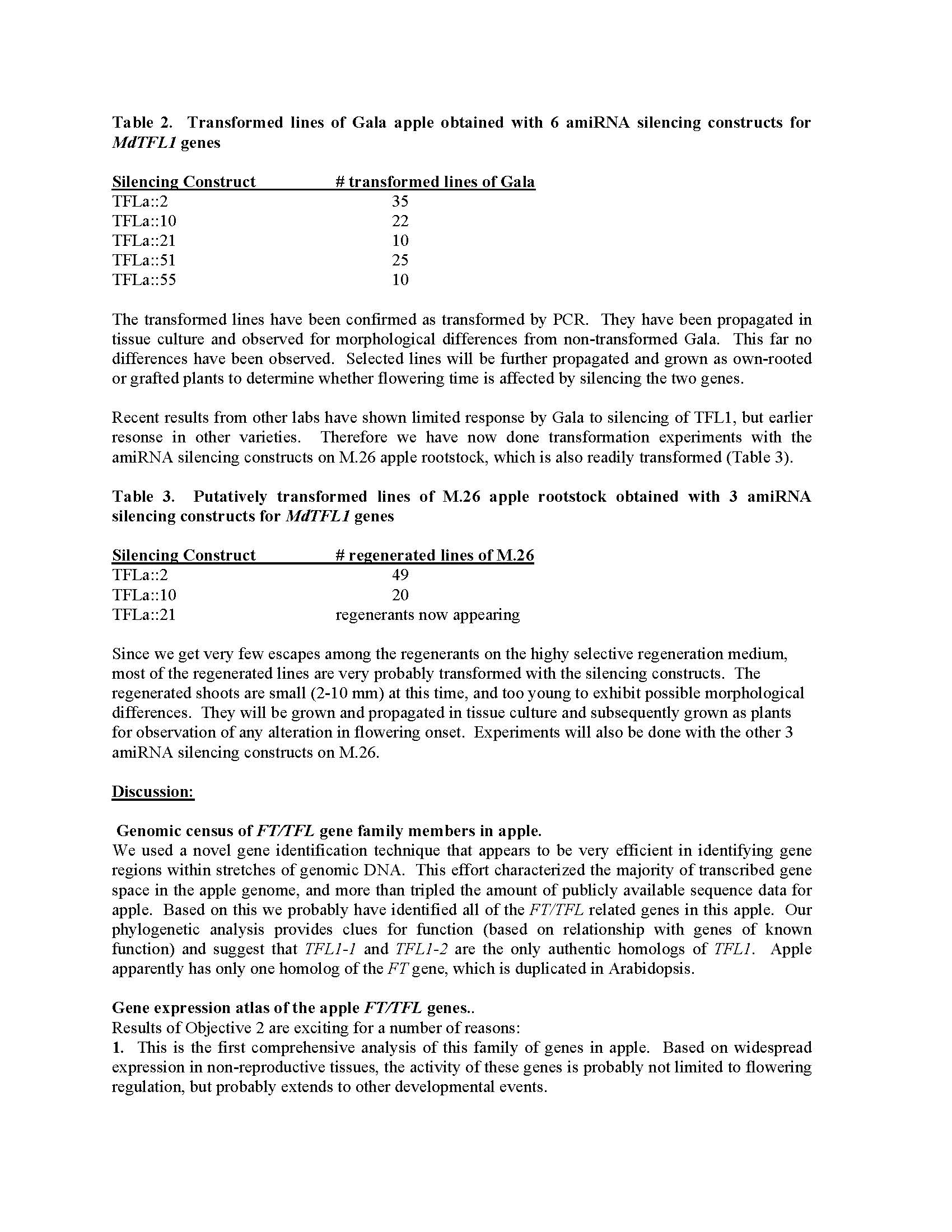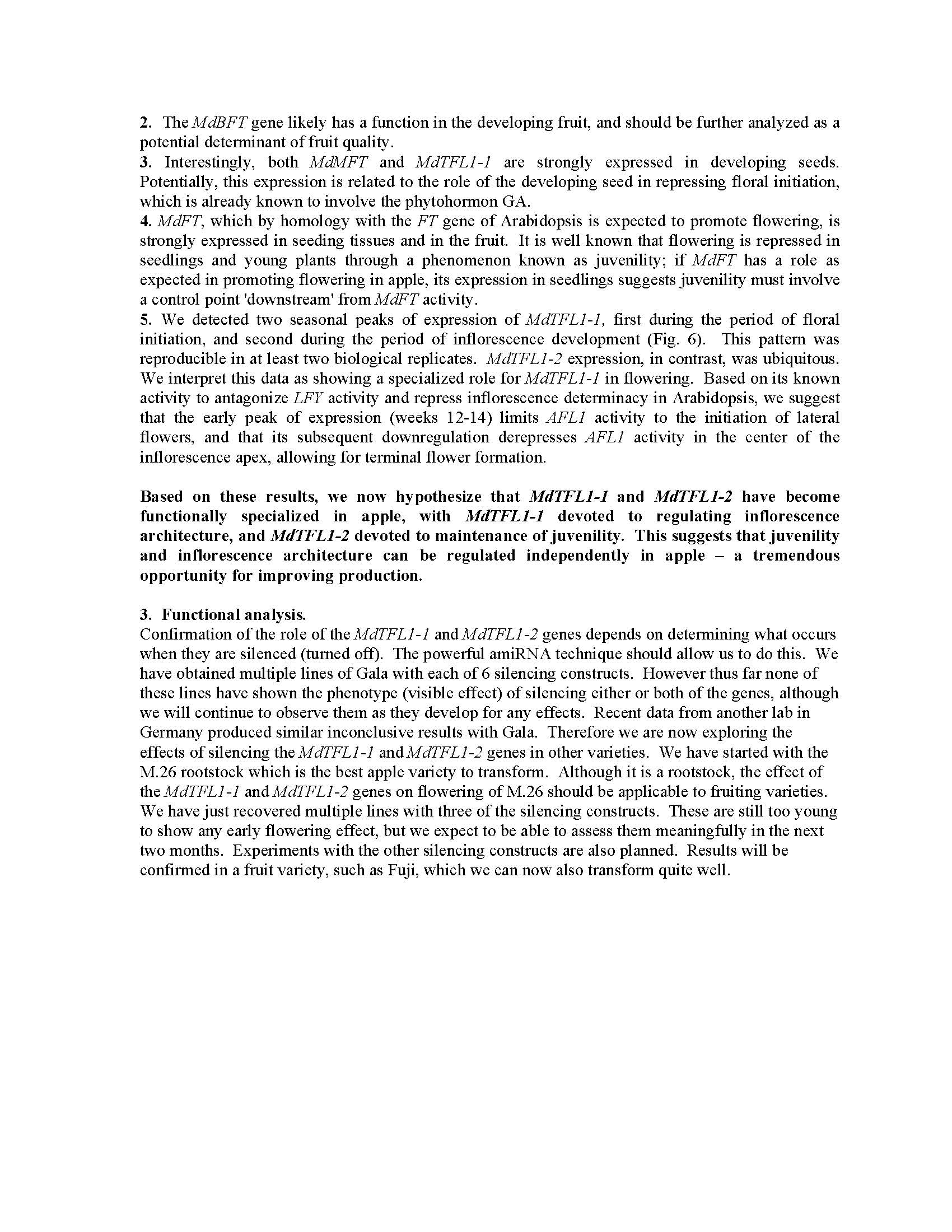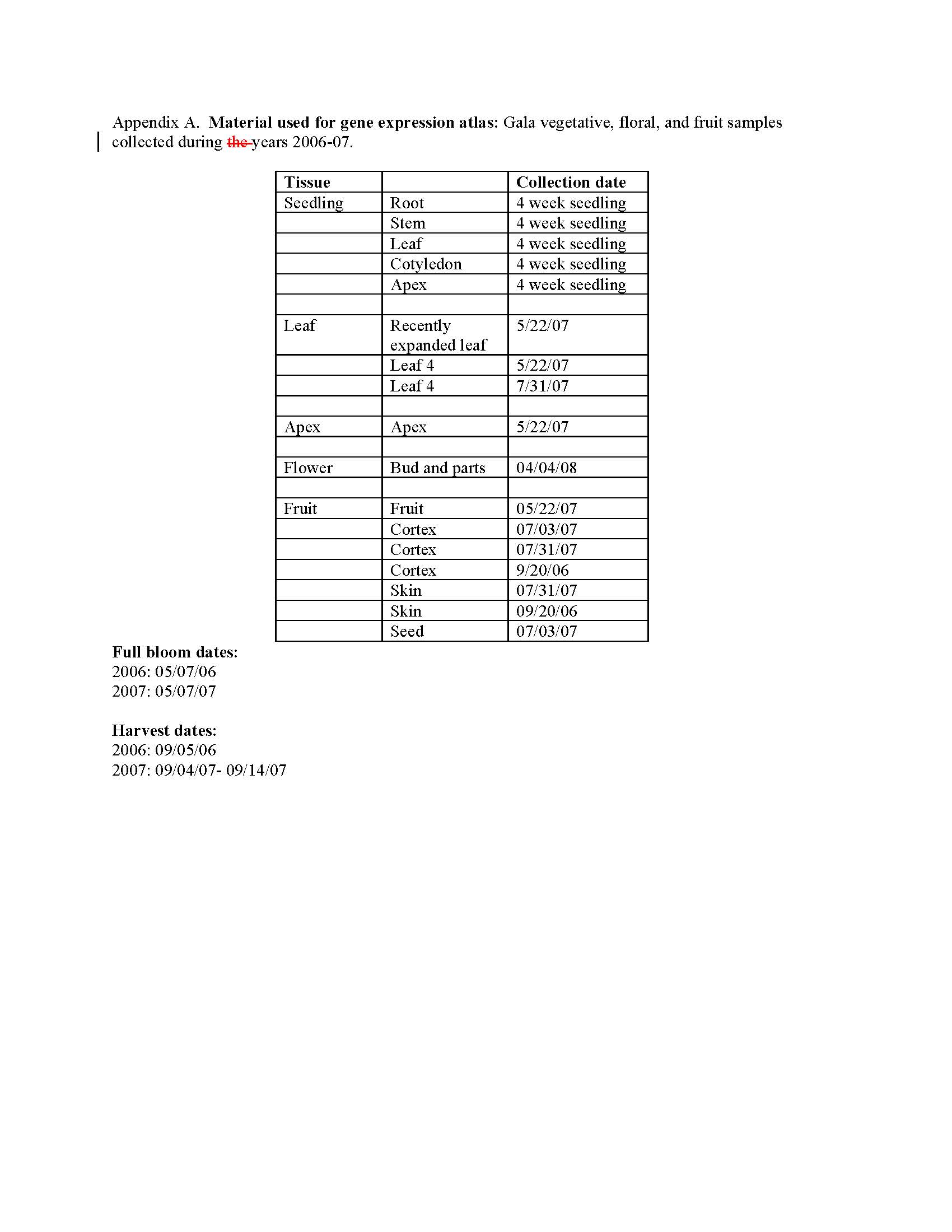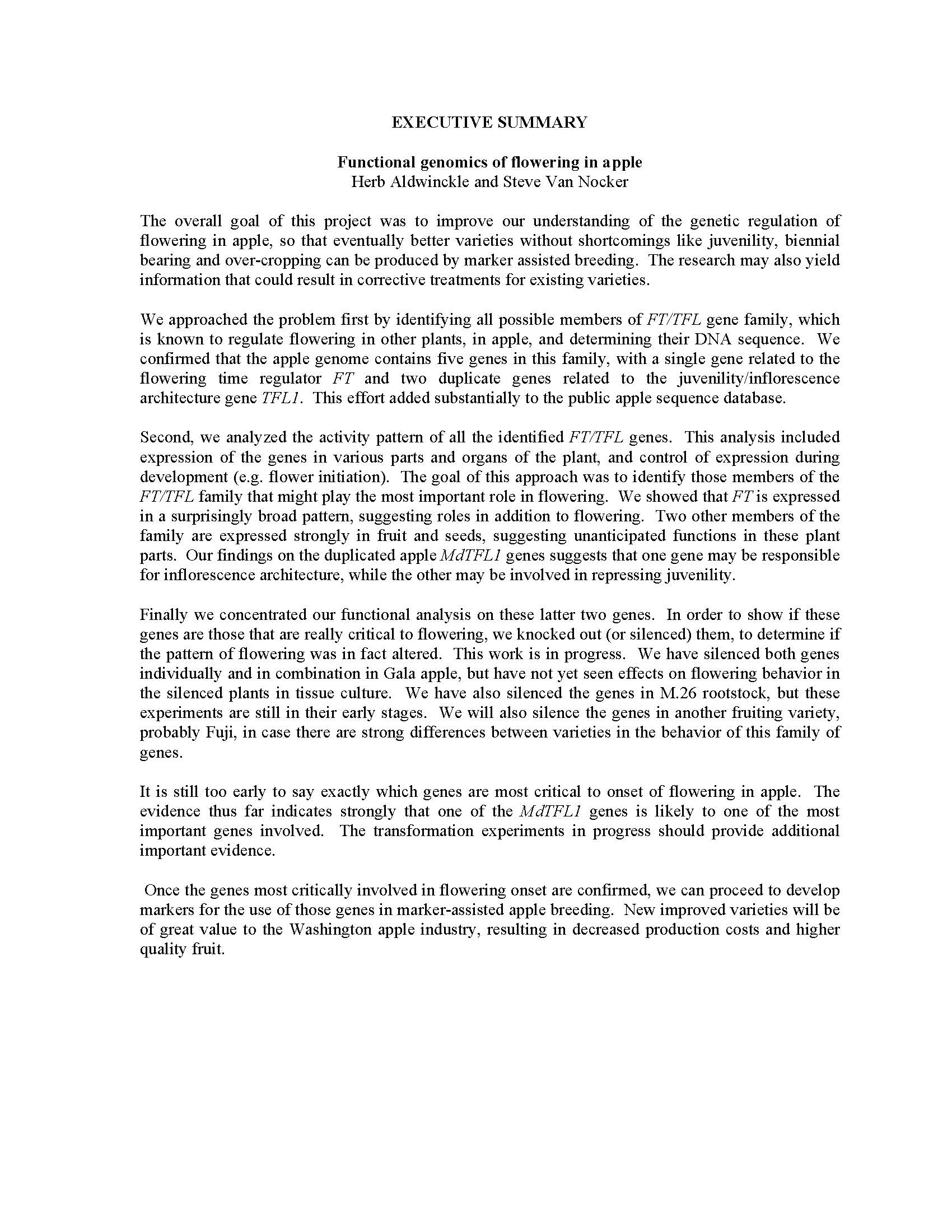Functional genomics of flowering in apple
Author: Herb Aldwinckle, Steve VanNocker
Published: 2008
Summary: The objectives for this report were: 1. Genomic census of FT/TFL gene family members in apple. We will identify all possible FT/TFL gene family members in apple, and determine their DNA sequence. As mentioned above, from previous studies we know that at least five exist in apple. This step is important, because additional genes may exist with even more important functions. 2. Gene expression atlas of the apple FT/TFL genes. We will extensively analyze the activity pattern of all FT/TFL genes identified through Objective 1, concentrating on flowering. This analysis will include expression in various parts and organs of the plant, changes in expression in response to phytohormones, effects of biotic and abiotic stresses on expression, and temporal control of expression during development (e.g. flower induction). The goal of this approach is to identify those members of the FT/TFL family that have the most important role in flowering. 3. Functional analysis. The best way to unambiguously determine the function of a gene is to examine the phenotypic consequences of loss of that gene's activity. In other words, how does flowering occur without that gene? In apple, genes can be repressed through a technique called RNA interference (RNAi), which PI Aldwinckle has several years' experience with other apple genes. We will examine the effect on flowering of suppression of the most important genes identified in Objective 1 and 2.
Keywords:

